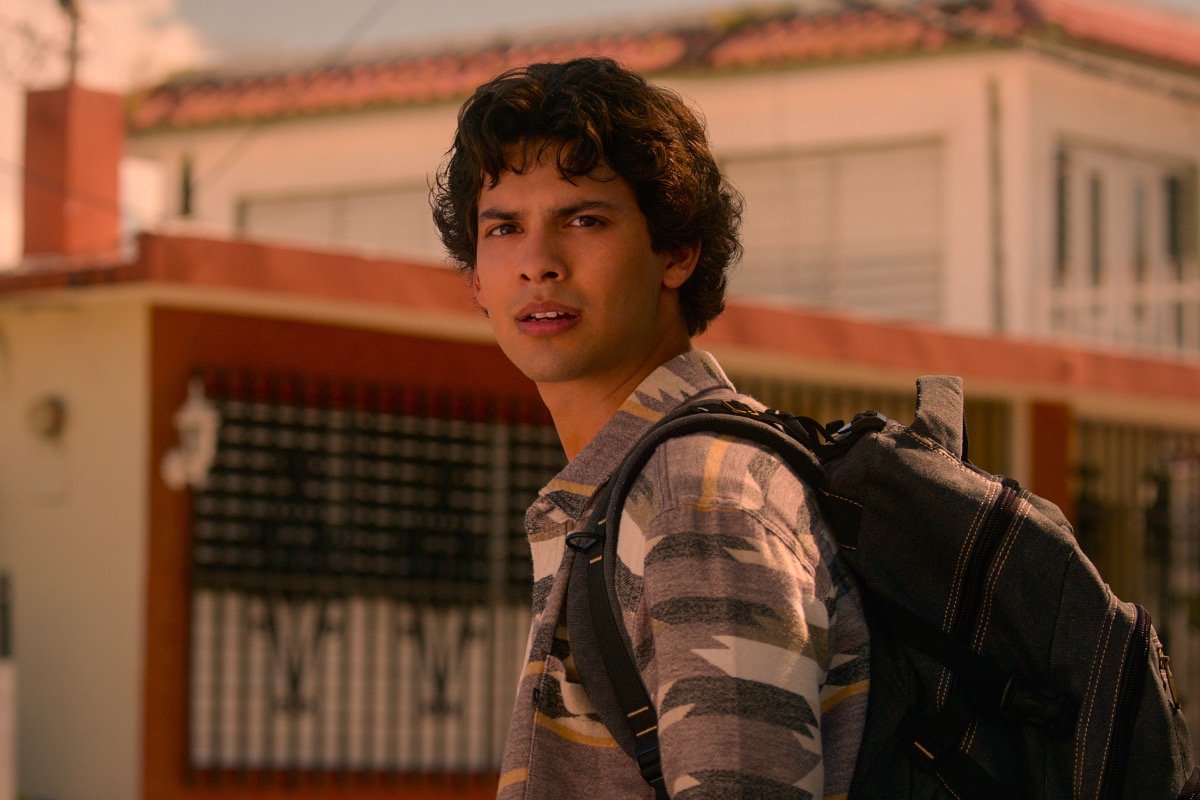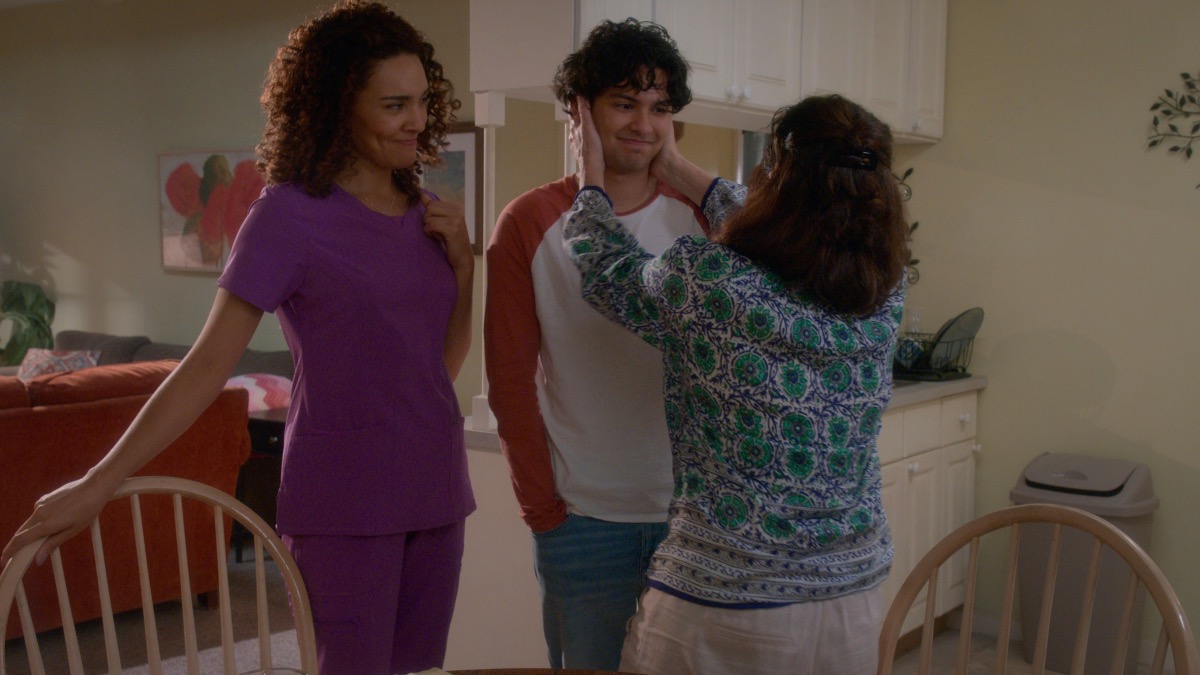

Xolo Maridueña as Miguel Diaz in the Netflix series ‘Cobra Kai’ (Courtesy of Netflix)
Netflix’s Valley-based karate hit, Cobra Kai, is out with its fifth season, and the first few episodes see our favorite martial artists take a road trip through Mexico.
Fans of the ’80s sequel may remember the season four cliffhanger in which Xolo Maridueña’s Miguel Diaz took off by himself in search of his long-lost and probably dangerous father.
https://www.youtube.com/watch?v=sUR9PYwlNaA
Miguel is perhaps the most obvious heir to The Karate Kid throne. He’s the closest to Ralph Macchio’s teenage Daniel La Russo in the original movie, and both are underdogs from the wrong side of the tracks transformed by karate.
But the series takes pains to show that the new crop of teens is not just doppelgängers of the originals. With Daniel and his old rival, the excellent William Zabka as Johnny Lawrence, still in the mix, it’s clear the old guys are more ciphers of days past than models for teens today.
Part of what makes the new generation different is the casting. There are girl fighters for one, as karate is no longer a male-only sport. And then there’s the fact that Miguel is actually Latino, part of an immigrant Ecuadorian family, played by the U.S.-born Maridueña who has Mexican, Cuban, and Ecuadorian ancestry. (Russo is Italian, the he was Latino in my imagination, as I’m sure he was for many of my generation, starved as we were for representation.) And the other Cobra Kai kids represent the actual diversity of Los Angeles County where the show takes place: Black, Asian, Latino, and white kids all mixed together.


William Zabka, left, as Johnny Lawrence and Xolo Maridueña as Miguel Diaz in Netflix’s ‘Cobra Kai’ (Curtis Bonds Baker/Netflix)
So, yes, Cobra Kai is one of those sequels, like Prime Video’s The Lord of the Rings: The Rings of Power, intent on updating the original to match our present-day politics of representation.
But that doesn’t mean I wasn’t nervous about the show’s trip down south. So much can wrong with these types of sequences, down to how their shot. Thankfully, Cobra Kai doesn’t use a sepia-tone filter for its Mexico scenes, pretending, as too many productions do, that the actual sunlight changes upon crossing the border.
Now, the lighting did look a little different to me, but the show’s general color-saturated, bright tone continues, making the subtle lighting changes more of a cue to viewers about the characters’ location than a geopolitical statement. And, yes, they do dip into stereotypes, with a chile-eating contest being the most egregious example — although the petty criminals are a close second.
The thing with Cobra Kai, though, is that it is all about stereotypes, making its central mission exposing and lampooning the white masculinity that was dominant in the ’80s and still stalks the halls of power today.
The main vehicle for this commentary is Johnny Lawrence, a man stuck in the past and suffering for it. In this season, he goes to Mexico in search of Miguel, and the differences between the two are on full display. When the surfer crew (whose leader is a gringo) pulls the same con on Johnny as they did on Miguel, Johnny fights them whereas Miguel avoided the confrontation.
Miguel uses his Spanish to get around and blend in as much as possible, while Johnny’s cultural ignorance causes him much anguish — he gets his car towed because of his lack of Spanish skills (really, his lack of even trying to understand someone speaking Spanish). And he causes a lot of trouble for buying and wearing an “FBI” shirt (it says “female body inspector” on the back, but that doesn’t keep the locals from assuming the white guys in “FBI” gear are FBI agents).


Vanessa Rubio, left, as Carmen and Xolo Maridueña as Miguel Diaz in Netflix’s ‘Cobra Kai’ (Netflix)
Throughout these sequences, the joke is on Johnny. Cobra Kai does ask us to root for him — and I do! — but it makes clear that being on Team Johnny is largely consumed with the hope that he will grow and evolve, leaving his limiting definition of masculinity in the past where it belongs (I’d argue Russo also needs to do this same work, although his case is more subtle, and for that reason less fun, but just as necessary).
It’s worth noting that Cobra Kai is why we’re getting a Chicano superhero, having catapulted Xolo Maridueña into DC/Blue Beetle fame. And five seasons in, the show has earned a lot of goodwill, not just for its Latinx representation.
So, yes, it applies its singular, lighthearted, campy tone to its Mexican adventure, and maybe there are some problems with that. But on balance, Cobra Kai does right by its Latinx characters, allowing us to laugh and play along with them.
In fact, my favorite part of the fifth season is a dream reenactment of a Top Gun sequence featuring Johnny, Miguel, and Miguel’s mom Carmen (played with heart and humor by Vanessa Rubio). I won’t spoil who’s dream it is, but let’s just say it’s the perfect example of how the show plays with expectations, reminding us that each of these characters is equally American and human and asking us to laugh and sympathize with them regardless of gender, race, or ethnicity.
***
A writer and activist, Cristina Escobar is the co-founder of latinamedia.co, uplifting Latina and gender non-conforming Latinx perspectives in media. She’s a member of the Latino Entertainment Journalists Association and writes at the intersection of race, gender, and pop culture. Twitter: @cescobarandrade



[…] post Netflix’s ‘Cobra Kai’ Goes to Mexico (REVIEW) appeared first on Latino […]